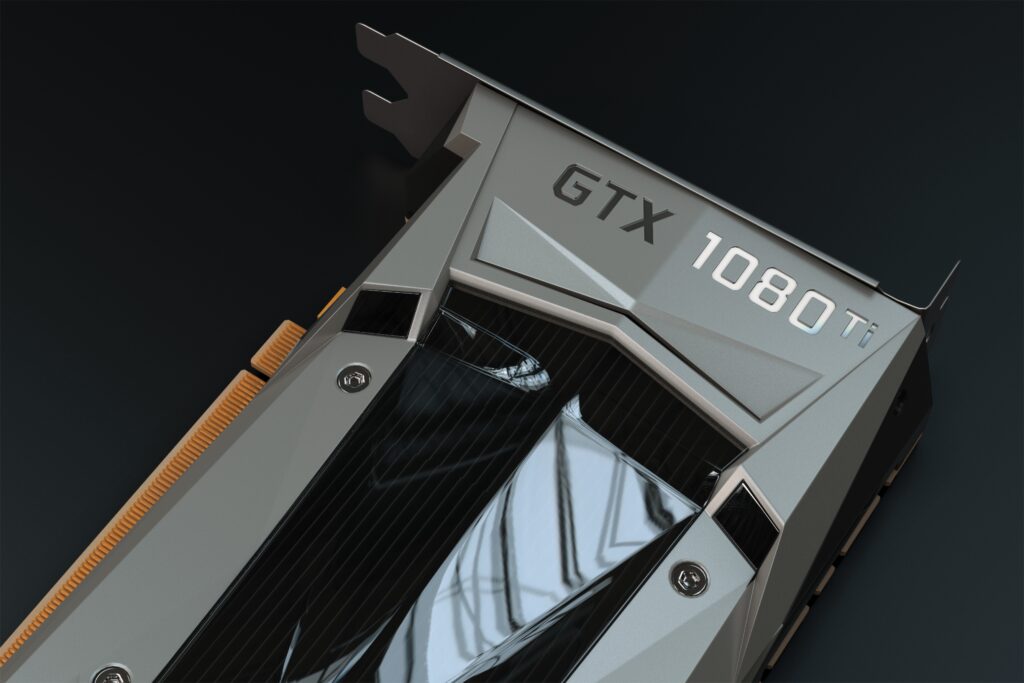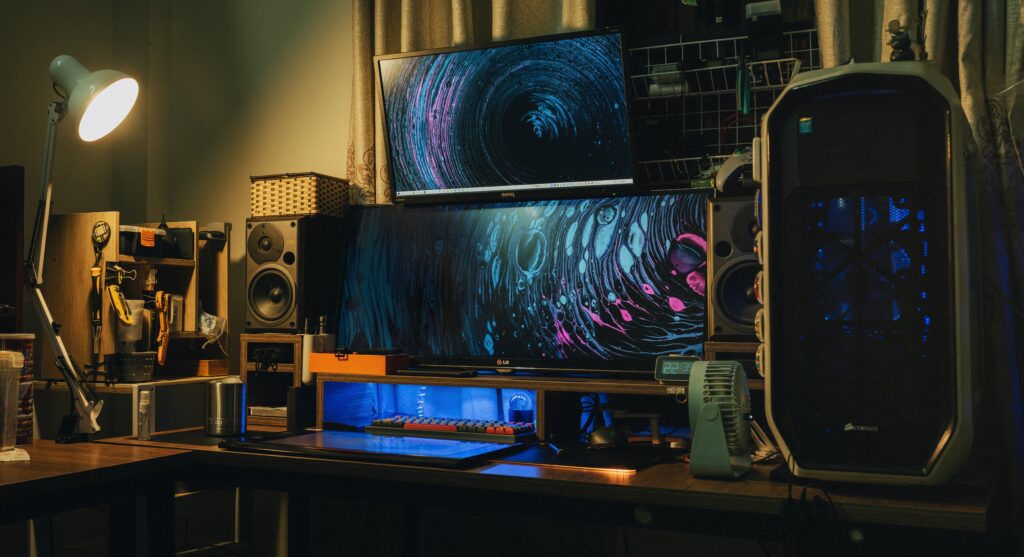The world of gaming is evolving rapidly, with each passing year bringing more demanding and visually stunning titles. To ensure smooth and immersive gameplay, having the right graphics card is essential. Choosing the ideal alternative among the hundreds of ones on the market might be challenging. In this post, check out the process of choosing the best gaming graphics card that fulfils your needs and improve gaming experience.
Understanding Graphics Card Specifications
It’s important to get to know yourself with graphics card features before starting the selection process. The performance and capacities of a card are significantly influenced by these technological factors.
GPU Architecture
The GPU architecture, or graphics processing unit, is the heart of a graphics card. Different architectures offer varying levels of performance and efficiency. Popular architectures include NVIDIA’s Turing and Ampere, as well as AMD’s RDNA and RDNA 2.
VRAM
Video Random Access Memory (VRAM) is dedicated memory on the graphics card that stores and processes graphical data. It affects the card’s ability to handle high-resolution textures and multitask efficiently. Cards with higher VRAM capacities generally perform better in graphically demanding games.
Clock Speed and Memory Bandwidth
It’s important to consider your particular gaming requirements and preferences in order to get the best gaming graphics card. Consider the following factors:
Identifying Your Gaming Requirements
To choose the right gaming graphics card, it’s important to assess your specific gaming needs and preferences. Consider the following factors:
Resolution and Refresh Rate
The resolution and refresh rate of your gaming monitor directly impact the graphics card you should choose. Higher resolutions, such as 1440p or 4K, require more graphical horsepower to render games smoothly. Similarly, a higher refresh rate demands a more capable graphics card to deliver the desired frame rates.
Game Genre and Settings
There are various graphics requirements for various types of games. Examples of games with higher graphic demands than more recent or 2D ones are first-person shooters and open-world games. Additionally, a more equipped graphics card is required to support the higher graphical fidelity if you wish to play games at their highest settings.
Compatibility with Your System
Make sure before making purchase that the graphic card that you choose is compatible with your system. Consider the following aspects:
Power Supply and PCIe Slot
Graphics cards draw power from your system’s power supply unit (PSU). Ensure that your PSU can handle the power requirements of the card you intend to buy. Additionally, check if your motherboard has the necessary PCIe slot for the graphics card. Most modern cards utilize the PCIe x16 slot.
Physical Dimensions and Cooling Solutions
Graphics cards come in various sizes, from compact to large. Measure the available space in your PC case to ensure the card fits without any issues. Additionally, consider the cooling solution of the card. Some high-end versions include specialized cooling techniques for greater ventilation of heat and more silent operation.
Budget Considerations
Your budget is a major factor in selecting the graphics card you can purchase. Though it may be appealing to choose the most powerful card on the market, it’s essential to find the correct balance between performance and price.
Price-Performance Ratio
Research the price-performance ratio of different graphics cards. Look for benchmarks and reviews that compare the performance of various models at different price points. This will help you identify the cards that offer the best value for your budget.
Future-Proofing
Consider your future gaming needs and how long you plan to use the graphics card. Investing in a slightly higher-end card may provide better longevity and ensure you can play upcoming games without needing an upgrade too soon.
Researching and Comparing Options
Once you have a clear understanding of your requirements and budget, it’s time to research and compare different graphics card options.
Reading Reviews and Benchmarks
Read expert reviews and user feedback to get insights into the performance and reliability of different graphics cards. Benchmarks can provide valuable information regarding their capabilities in specific games and resolutions.
Considering Brand Reputation and Customer Support
Opt for reputable brands known for their quality and customer support. A reliable brand can offer better warranty coverage and assistance in case of any issues with the graphics card.
Deciding Between AMD and NVIDIA
The two major players in the graphics card market are AMD and NVIDIA. Both offer excellent options, but there are some key differences to consider.
Features and Software Support
NVIDIA’s graphics cards often come with exclusive features like ray tracing and DLSS (Deep Learning Super Sampling). AMD, on the other hand, offers features like Smart Access Memory and FidelityFX. Consider which features align with your preferences and the games you play.
Exclusive Technologies
Both AMD and NVIDIA have their own exclusive technologies and partnerships. For example, NVIDIA has G-SYNC, while AMD supports FreeSync. Check if your monitor supports any of these technologies for optimal gaming experience.
Choosing the Right Model and Variant
Once you’ve decided between AMD and NVIDIA, it’s time to choose the specific model and variant of the graphics card.
Different Tiers and Series
Graphics cards are available in different tiers and series, each targeting specific performance levels and price ranges. Research and compare models within your desired tier to find the one that best suits your needs.
Custom vs Reference Designs
Graphics cards often come in two variants: custom designs and reference designs. Custom designs are built by third-party manufacturers and offer improved cooling and potentially higher overclocking capabilities. Reference designs, on the other hand, are designed by the GPU manufacturer and adhere to their specifications.
Evaluating Aftermarket Options
Consider additional factors when choosing between different aftermarket options.
Cooling Solutions and Noise Levels
Graphics cards with better cooling solutions, such as larger heatsinks or multiple fans, tend to perform better thermally. This can result in lower noise levels and more headroom for overclocking, if desired.
Overclocking Potential
Look for models with strong overclocking capability if you’re considering overclocking your graphics card to get more performance. Often, specialized designs with powerful power supply systems are more appropriate for this use.
Finalizing Your Decision
Consider each of the issues mentioned carefully before making a decision. Budget, gameplay demands, compatibility, and need for future-proofing should all be taken into account. You may select the gaming graphics card that will maximize your gaming experience by performing extensive study and taking your time.
Conclusion
Choosing the right gaming graphics card is a critical decision for any avid gamer. By understanding the specifications, identifying your gaming requirements, considering compatibility, budget, and doing thorough research, you can make an informed purchase. Remember to prioritize factors like GPU architecture, VRAM, resolution, and refresh rate, as well as cooling solutions and future-proofing. With the right graphics card, you can unlock stunning visuals and smooth gameplay, enhancing your overall gaming experience.
FAQs
1. What is the importance of choosing the right gaming graphics card? Choosing the right gaming graphics card ensures smooth and immersive gameplay by delivering high-quality visuals and optimized performance.
2. How can I determine whether a graphics card will work with my computer? Check your power supply’s wattage and the available PCIe slot on your motherboard. Ensure the graphics card’s dimensions fit your PC case and consider its cooling requirements.
3. Should I prioritize clock speed or memory bandwidth when choosing a graphics card? Both clock speed and memory bandwidth are important for graphics card performance. It’s best to strike a balance between the two based on your gaming requirements.
4. Which is better, AMD or NVIDIA? Both AMD and NVIDIA offer excellent graphics card options. Consider their features, software support, and exclusive technologies to determine which aligns better with your needs.
5. Is overclocking necessary for gaming? Although overclocking is not necessary for gaming, it might offer more performance if you want to test your graphics card beyond its default settings.



